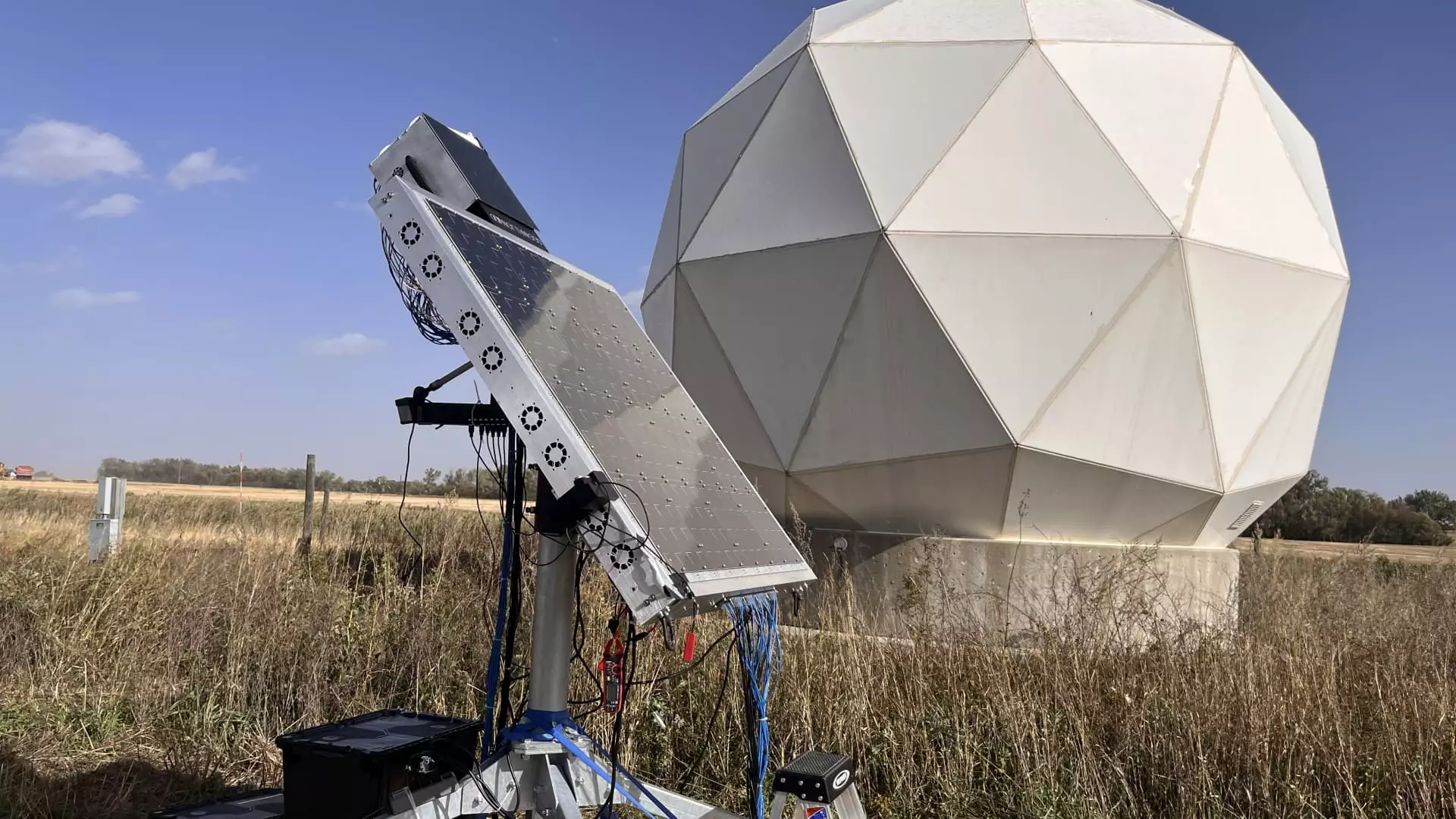Revolutionizing Space Connectivity: Northwood Space’s Bold Steps Forward

As the modern world grapples with the complexities of space exploration and satcom technologies, a new player has emerged, poised to redefine the ground infrastructure that supports satellite communications. Northwood Space, founded under the leadership of former television star Bridgit Mendler, has achieved a significant milestone by successfully connecting to satellites from Planet Labs. This accomplishment marks not only a technical achievement but also positions Northwood as a potential catalyst for a transformative shift in how data is transmitted between Earth and space.
Traditionally, satellite ground stations relied heavily on parabolic dish antennas, which, while effective, suffer from limitations in connectivity and scalability. Northwood Space challenges this norm with its advanced phased array technology embodied in its system, named Portal. By enabling simultaneous connections to multiple satellites—up to ten at once—Northwood aims to disrupt an industry typically limited to one to three simultaneous links per conventional system. Mendler articulates a vision of modernizing ground connectivity akin to the evolution seen in the cellular industry, where efficiency and shared resources can unlock new commercial potential.
Mendler’s approach essentially democratizes access to space data, breaking the monopoly previously enjoyed by larger satellite operators with costly infrastructure. This positions Northwood not only as another technology provider but as an innovator aiming to usher in a new era of accessibility and efficiency in satellite communications.
Recently, the Northwood team conducted an ambitious test in Maddock, North Dakota, with their prototype antenna, affectionately dubbed “Frankie.” This trial served as a telemetry, tracking, and control (TT&C) exercise, demonstrating Northwood’s capability to establish bi-directional communications with a Planet Labs satellite. The successful transmission was achieved over both S-band and X-band frequencies, validating the company’s technology in a real-world scenario. Mendler described the test as not just a technological success but a significant milestone that underscores the feasibility of their phased array approach.
Northwood’s rapid prototyping and deployment—designing and building Frankie in just four months and transitioning to live tests within six hours—showcases their agility and commitment to addressing industry shortcomings. Joseph Breu from Planet Labs praised Northwood for advancing ground station technology, emphasizing that this development may resolve long-standing issues related to cost and scalability within the sector.
Mendler perceives the ground station as a fundamental pillar in the triad of space technology, which comprises rockets (launch vehicles) and satellites. She claims that as the space industry burgeons, the appetite for enhanced ground support capabilities becomes increasingly clear. Northwood’s aim to redefine ground stations comes at a crucial juncture when the demand for satellite data is rapidly growing—a demand catalyzed by advancements in Earth observation, telecommunications, and global connectivity.
The concept of ‘Ground Station as a Service’ (GSaaS) is burgeoning, with companies like Amazon and Eutelsat exploring avenues in this nascent market. However, Mendler believes that Northwood can elevate the GSaaS paradigm beyond its current limitations, illuminating past connectivity issues that have restrained growth in this domain. By doing so, Northwood aspires to not only improve existing infrastructure but also accelerate the entire satellite ecosystem’s evolution.
Northwood’s ambitious plans include the establishment of Portal sites across diverse regions, including the U.S., Europe, Australia, and New Zealand. Each site aims to support multiple satellite connections and promise high data rates exceeding 1 gigabit per second. This geographic expansion is pivotal, as it can ensure global coverage and responsiveness to varying satellite operator needs.
As Northwood continues to develop and deploy its innovative ground stations, the implications for the industry could be profound. Mendler’s passion for the technological potential of space connectivity shines through, emphasizing her commitment to fostering an environment where ground support is streamlined and efficient.
With each successful test and strategic insight, Northwood Space, under Mendler’s leadership, solidifies its role as a forward-thinking disruptor in the satellite communication landscape. The integration of phased array technology paves the path for enhanced operational capabilities while providing an essential bridge between Earth and the ever-expanding universe of satellites. As the company continues its ambitious mission to elevate ground station performance, one thing becomes increasingly clear: the future of space connectivity is not just on the horizon; it is already taking shape.





